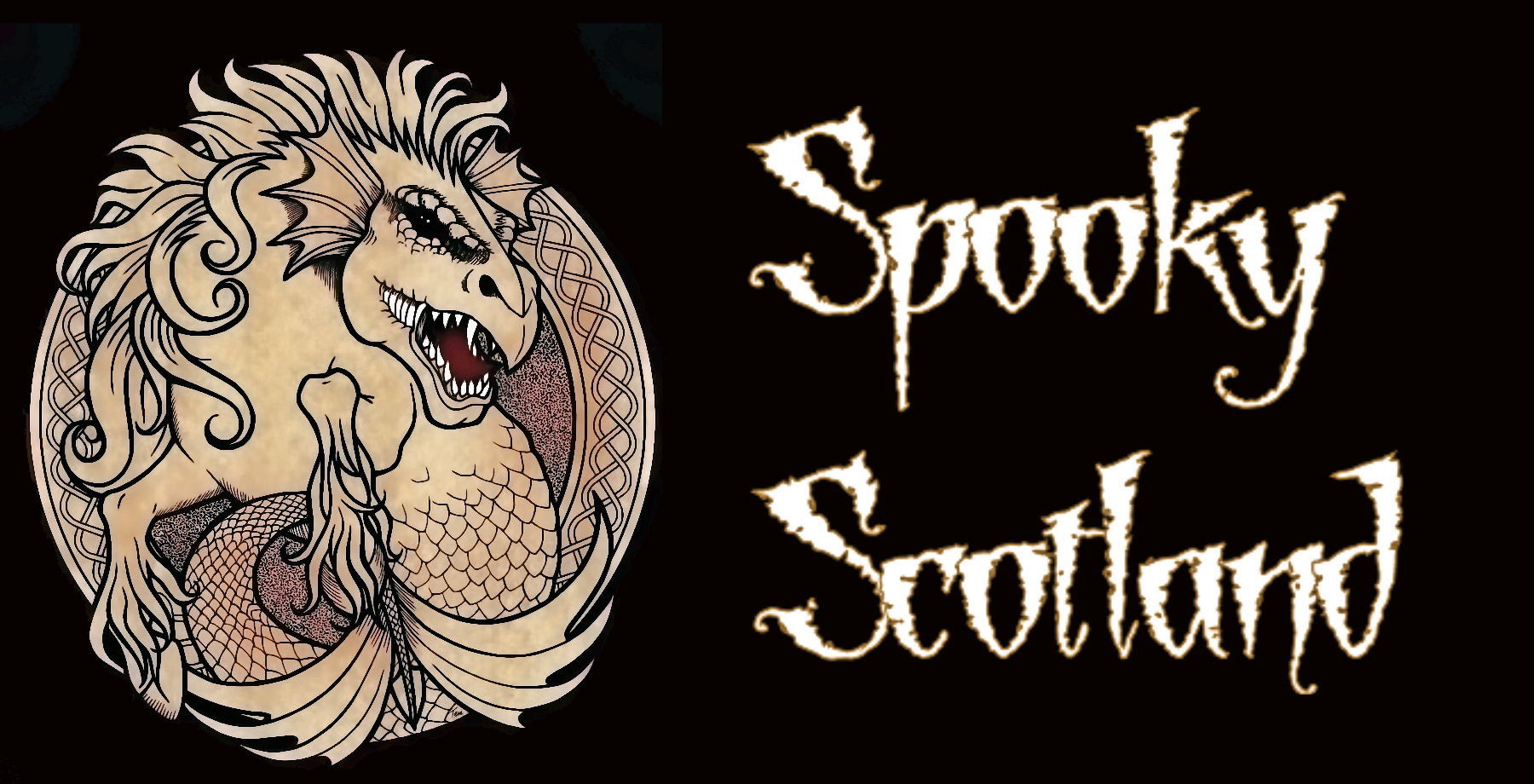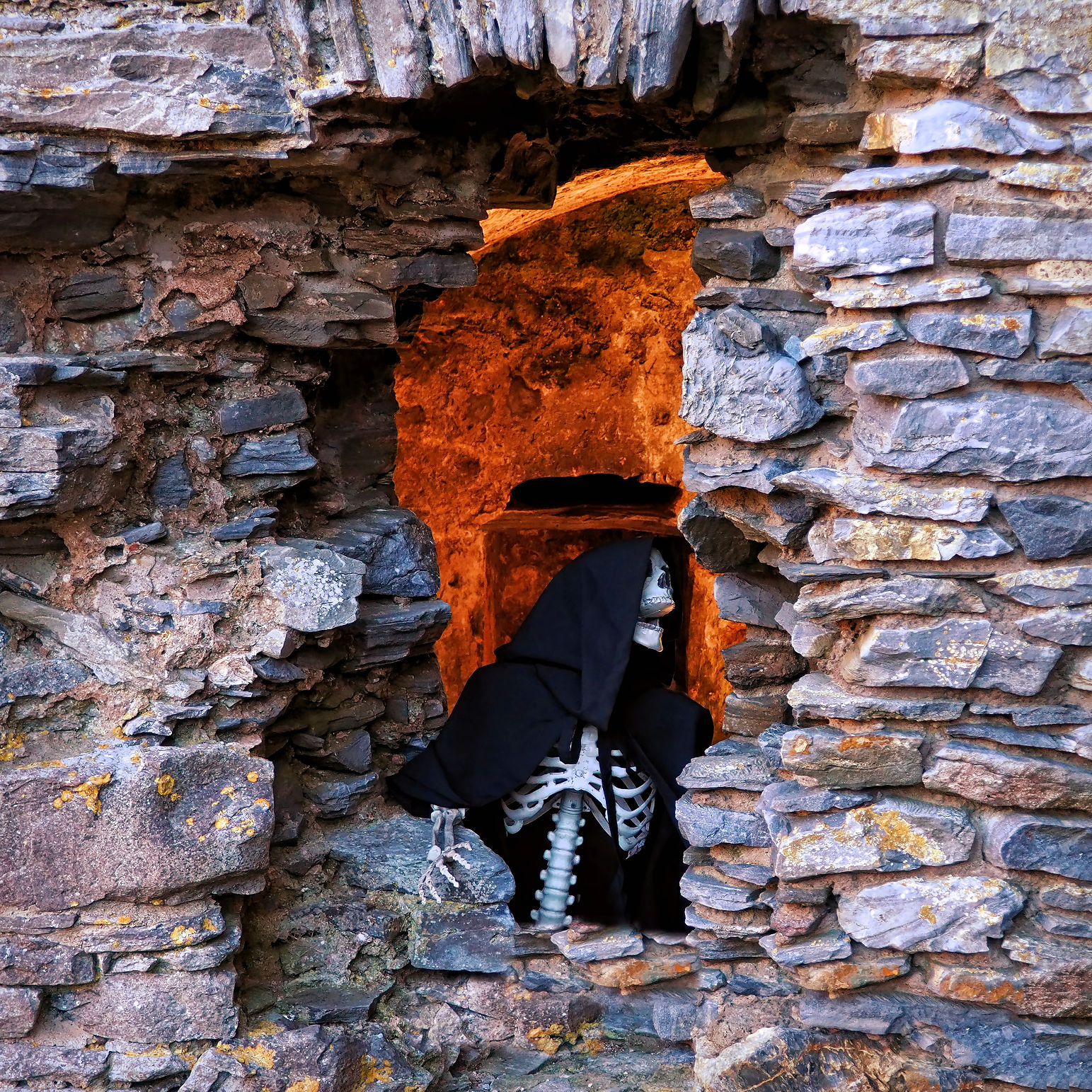Halloween began in the dawn of history as a Celtic harvest festival called Samhain (pronounced sow-in). We know from the alignments of the Neolithic stone circles and cairns that the solstices were important to the early peoples in Scotland. The summer and winter solstices were easy to measure and could be used as the basis of early calendars along with the lunar cycles.
However, as agriculture became more important the Quarter Days between solstices and equinoxes became increasingly significant. Imbolc, Beltane, Lughnasadh and Samhain all correspond to key events in the agricultural year. Samhain was the most important of all; it marked the end of harvest when the herds were gathered home and slaughtered. It was also the start of the Celtic New Year. There are alternative theories as to the meaning of Samhain. It has been suggested it means ‘summer’s end’ or possibly ‘assembly’
Celtic beginnings
Alas, because ancient records are fragmentary, the exact nature of Samhain is not fully understood. However, it was thought to be an annual communal meeting at the end of the harvest year, a time to gather food reserves for the winter months and bring animals back from the pastures. It is possible that Samhain may have been a time of communing with the dead and warding against harmful spirits. From folklore, we have whispers of an ancient memory that It was the time when the Goddess Bride was overpowered by the great winter Goddess, the Cailleach or the Carlin. It was the beginning of the dark time of the year for in Scotland for the days during the winter months are short and dark. This was the season of the Earth’s decay when the sun’s strength had waned, and nature was abandoned to the powers of darkness.
The Celtic peoples considered the Quarter days to be liminal periods. This was the time when the veil between the mortal world and the Otherworld became thin. The Gaelic people considered the Otherworld to be the abode of the fae, the Gods and Goddesses and the departed dead. There is a lot of speculation as to what might have happened amongst Scotland’s early people at Samhain. Did they worship the dead? Are some of the traditions based on what was once sacrifices offered up to the Gods?
The Christianisation of Halloween
As Christianity began to spread across Europe, the early Christian church had a policy of deliberately grafting on new Christian Holy Days to the old pagan calendar. Thus, the 1st of November became ‘All Saints’ Day or ‘All Hallows’. All Hallows’ Eve first appears in 1556 but the word Halloween is Scottish in origin with the evening being called ‘even’, ‘e’en’ or ‘een’ in Scots. It was a Feast which commemorated the martyrdom of the saints, followed by ‘All Souls’ Day’ on the 2nd of November when people would light candles in remembrance of the souls held in purgatory.
As Scotland entered the Medieval Age, many of the superstitions which were connected to Halloween were remnants of the old religion.
The History of Halloween in Scotland
The Reformation brought about a change in how the church perceived Halloween. In many parts of Britain, Halloween began to wane and many of the old Halloween traditions were incorporated into Guy Fawkes Night after the Gunpowder Plot of 1605. It was a time of deep paranoia of witchcraft. However, the Scottish people have a stubborn core and persisted in keeping the old ways alive.
Then in 1785, the poet Robert Burns wrote his poem Halloween, which tells of many of the local Halloween Traditions found in Ayr during his lifetime. The popularity of his poem saw a resurgence in interest in Halloween out with Scotland.
The Puritans who colonised the Americas, were strongly opposed to Halloween. As a result, there is little evidence of the widespread practice of Halloween in the States, during the late 18th and early 19th centuries. Then an influx of Scottish and Irish migrants saw Halloween being embraced and incorporated into American culture to the point where the States could now be said to be the Halloween capital of the world.
Halloween Traditions in Scotland:
Witches
Rumours of witches having black masses at Halloween were derived from the older motif of the Cailleach, the Crone (only she was blue instead of green!).
It is interesting to note that during a witch trial in Aberdeen the accused admitted they had danced round the ‘Mercat croce’ and the ‘fish croce’ at Halloween. Whether this actually happened is debatable as it was known that suspected witches frequently made their confessions under extreme sleep deprivation. It does, however, show that this was a common belief held by those in authority at the time.
Halloween Bonfires
Tales of the dead and evil spirits roaming the Earth harken back to a time when the ancestors were worshipped with the lighting of the Halloween Neid fires.
Unlike the Beltane fires which were lit at sunrise, those of Halloween was lit at sunset. This was likely, as in ancient times the Samhain fires were lit to combat the powers of darkness which were now in ascent. The nights are very long during the Scottish winter months. In time the bonfires were lit to keep the witches at bay. It was a practice that was to persist in some places for hundreds of years. In Queen Victoria’s time, a huge bonfire was lit opposite Balmoral Castle. An effigy of a witch called ‘Shandy Dann’ was burnt on the fire.
Sometimes torches made from bog-fir were lit from the bonfires and children and servants would then form a torch-lit procession, treading out the bounds of their property
Fairy belief at Halloween
At Halloween fairies or the sìth were said to move in procession from one fairy-hill to another. Thus, it was thought that if you discovered a Fairy Hill at this time of year and walked round it nine times towards the left, a door would be opened into their subterranean realm.
Sacrifice to Shony
On the Isle of Lewis, it was not only the spirits of the soil which had to be propitiated. At Bragtar, the inhabitants made a libation to a sea-god named Shony at Hallowtide. A family member would wade into the sea carrying a cup of ale. The supplicant then called in a loud voice, “Shony I give you this cup of ale, hoping you will be so kind as to send us plenty of seaware for enriching our ground for the ensuing year.” The cup of ale would then be thrown into the ocean. I cannot bear to think how cold that must have been for even in summer, the seas around Scotland can be bitterly cold.
The Hallowmas Bannock
Bannocks were always baked on the quarter days and Halloween was no exception. Often these bannocks were made to a different recipe to normal bannocks. For example, at Rutherglen ‘sour cakes’ were made. The oatmeal used was allowed to ferment. Sugar and cinnamon or aniseed would be added to this. The baking would occur after sunset. Only women were permitted to bake the bannocks and it took place in a specially marked area which was considered to be consecrated ground. Bystanders were forbidden to enter this area.
About six to eight women would form a circle around the fire. The woman toasting the cakes is called the Queen or Bride and the others are styled her maidens. (Could this be another example of the Nine Maidens motif?) Each woman sits with a baking-board on her lap. The dough is passed in a sunwise direction, each woman beating it out thinner until it was returned to Bride to cook.
Hallowmas Fair
Fairs commonly occurred around Halloween. In Edinburgh, this took place at the Calton Hill. Interestingly, Calton Hill derives its name from the hazel tree which was one of the ancient sacred trees of Scotland. Divination was a common occurrence and hazelnuts were used. Calton Hill is an ancient sacred site. Today, the site is still used as the location for the Beltane Fire Festival which takes place on the Eve before Beltane.
Guising
People believed that ghosts roamed the streets on Halloween night. Children would disguise themselves as evil spirits by blackening their faces and dressing in old clothes. Thus disguised, they could venture out safely without being detected by malevolent spirits. This appears to be an ancient relic of the ceremony which took place at the Samhain bonfire, where participants would blacken their faces with ash from the bonfire. It was thought this would bring about protection and good luck
In time, masks replaced the blackened faces and costumes began to be worn. However, these guisers simply could not knock on their neighbours’ doors and shout ‘Trick-or-treat’. They had to earn their treat by telling a joke, reciting a poem or singing a song.
Traditionally guisers would be given an apple or nuts.
Neep Lanterns:
To ward off evil spirits, large bonfires were lit and ‘neep lanterns’ were laboriously carved out of turnips. When Europeans arrived in the States, they realised that pumpkins were far easier to carve as they were soft. So today, the pumpkin has become the vegetable of choice for making Jack-o-lanterns.
Dookin’ for Apples
A staple of Halloween parties, this time-honoured game involves trying to grab apples floating in a basin of water using your mouth, while your hands are tied behind your back. It is thought that this also has its origins in pre-Christian times. When an apple is cut in half it reveals a pentagram. This is often associated with fertility.
Treacle Scones:
The aim of this messy game is to take a bite out of treacle (molasses)-covered scones hanging from string while your hands are tied behind your back. Inevitably your face ends up covered in sticky gunge.
Divination Rites:
Traditionally Halloween night was considered to be a time when the veil between the mortal world and the Otherworld thinned to almost transparency. It was a time when visions by those with ‘the Sight’ became clearer. Those born at Halloween were said to be gifted with the Second Sight. In the past, Halloween was not just for children. Young adults could also entertain themselves with games which would reveal their future spouse. An apple would be peeled in a long strip, then the peel would be tossed over your shoulder. The peel was believed to land in the shape of the first letter of your future spouse’s name.
Fortune-telling Games
For newly engaged couples, another fortune-telling game existed. To find out whether or not you and your beloved would live happily ever after, the couple would toss a nut each into an open fire. If the nuts smouldered quietly next to each other amongst the flames, then the union would be a good one. Alas, if the nuts hissed and crackled, beware!
The Three Luggies was a fortune-telling game where three bowls or luggies were set out. The performer was blindfolded. He dips his left hand into one of the bowls. If he picks the clear water he will marry a maiden, if he chooses the water fouled by soot, he will marry a widow and if the picks the empty dish he will remain a bachelor.
Pulling the Kail-Runt involved a band of girls going into the kail-yard after dark. They would close their eyes, and each pulls up the first kail-runt (cabbage -stalk) she touches. The size of the stalk indicates the appearance of the future spouse- large, small, fat, thin, etc. The heart of the cabbage whether sweet or sour is a indication of his disposition.
A Quirky Halloween Law
The Witchcraft Act of 1735 forbade the consumption of pork pastries at Halloween. It was not repealed until the 1950s!
Halloween Wishes
Happy Halloween wishes from everyone at Spooky Scotland!




